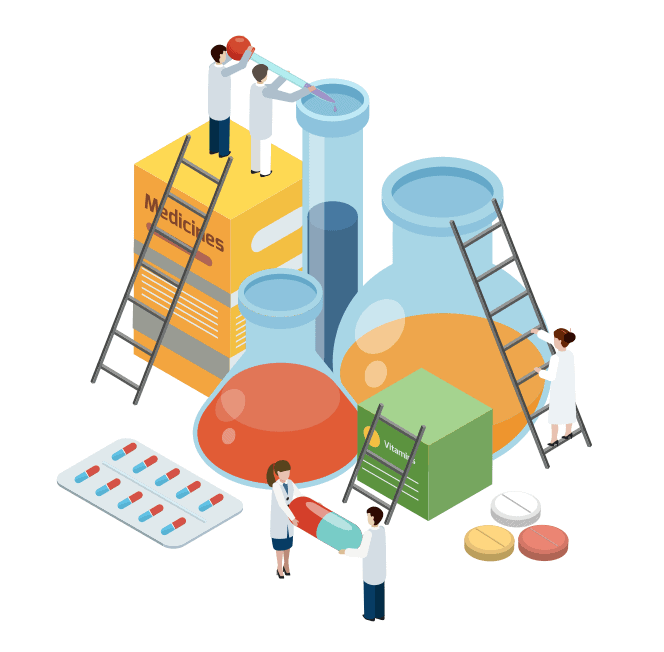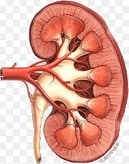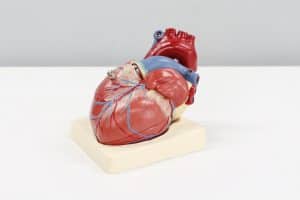
Sustainability and security: How packaging is modernising pharma
pharmafile | March 24, 2020 | Feature | Business Services, Manufacturing and Production, Medical Communications, Research and Development, Sales and Marketing | counterfeit medicines, falsified medicines, feature, packaging, pharma
In a world living in the shadow of substandard and falsified medicines, climate change and antimicrobial resistance, pharmaceutical packaging will be a cornerstone to the industry’s path towards modernisation, Matt Fellows discovers.
Pharmaceutical packaging and labelling may seem an innocuous subject in a field dominated by mind-boggling medical breakthroughs which sometimes breach the border of science fiction and where life and death often hang in the balance; the issue appears at first glance as decidedly more pedestrian than some of the other headline-grabbing developments often rocketing out of the industry. But in actual fact, these humble considerations in the design, marketing and distribution of a product pull huge weight in a number of key spaces.
One of these areas is sustainability – an issue which has certainly risen to the top of much contemporary discourse within the industry and beyond in light of the looming threat of global warming and wider environmental impact of industrialisation.
And even when compared to other industries and ostensibly more obvious culprits, pharma stands out as one of the worst offenders. A 2019 study originating from McMaster University in Canada was the first of its kind to attempt to paint any kind of picture of the industry’s carbon footprint, and with the reluctance of companies in the sector to share these data and their generally inconsistent commitment to transparency in this regard, that’s not a surprise. “More than 200 companies represent the global pharmaceutical market, yet only 25 consistently reported their direct and indirect greenhouse gas emissions in the past five years. Of those, only 15 reported their emissions since 2012,” wrote Lotfi Belkhir, Associate Professor and Chair of Eco-Entrepreneurship at McMaster University and a co-author on the study.
In order to generate a fair representation alongside other large-scale production industries, the study measured the total amount of emissions generated by the sector for every million dollars made in revenue. It was found, shockingly, that the pharma industry generates more than double that of the automotive industry: 48.55 tonnes of carbon dioxide equivalent (CO2e) per million dollars – a 55% increase on the automotive industry’s 3.14 tonnes of CO2e per million dollars.
To further this comparison, the study found that, in total, the pharma industry pumped out a massive 52 megatonnes – or 52,000,000 metric tonnes – of CO2e in 2015, compared to the 46.4 megatonnes generated by the automotive sector over the same period. All this despite the fact that the pharma market is the smaller of the two by 28%, according to the findings; ultimately, it generated 13% more pollution.
Right now, the spotlight’s unblinking glare is pointed squarely on the industry’s biggest players, as it is from sector to sector, with the biggest onus being laid on those who make the biggest impact. Even amongst these major players, the study found that their carbon footprint can vary wildly: at 77.3 tonnes of CO2e per $1 million, Eli Lilly was found to generate 5.5 times greater emission intensity than Roche’s 14 tonnes of CO2e per $1 million.
There are a number of reasons why this could be the case, but it does point to the considerable impact of the inherent inefficiency of any sort of current oversight or regulation of the practices these companies employ to monitor, control and report their emissions. The study also noted that the reporting practices of some firms were so opaque that any attempt at accurate analysis is rendered pointless. “This level of opacity makes it not only impossible to assess the true environmental performance of these kind of companies; it also raises questions about the sincerity of these companies’ strategies and actions in reducing their contribution to climate change,” Belkhir noted.
However, while many players in the pharma sector do not emerge favourably from this sort of digging, the current climate and societal concern for sustainable practice presents an opportunity for making commitments to perform better in this regard: a chance to do good and also look good to potential consumers and stakeholders. Towards the end of January, AstraZeneca was a major firm to step forward to make such a commitment, pledging to make its operations carbon-neutral by 2025 – something that will cost the company $1 billion.
This is a major step for a company whose mainstays include the treatment of respiratory diseases, and will include the design and production of innovative inhalers in the midst of debate that current forms of the essential devices contribute to global warming. They will feature propellants with a Global Warming Mark that is between 90% and 99% lower than current models.
The plan will also include switching to renewable energy sources and even to electric cars in a bid to bring down its overall consumption.
Discussing the plan, AstraZeneca CEO Pascal Soriot told Bloomberg: “I believe we’re facing a climate crisis, and every company has to do something. I have children and a grandson, and they’re going to look at me and say, ‘what did you do?’ And our employees also are asking us, expecting us to do something.”
AstraZeneca is not the only major player to make such commitments: Novo Nordisk reported last year that it was on track to meet its pledge to transition its production facilities to utilise entirely renewable electricity by early 2020 through the use of solar panels, while Takeda, fresh from its acquisition of Shire, plans to offset around 4 million tonnes of emissions to achieve carbon neutrality this year.
Waste not, want not
The pharmaceutical packaging market is projected to grow to a total value of $112 billion by 2026, according to an analysis from GlobalData, and this fact redoubles the importance of considering the impact of such packaging on the environment. Traditionally, the industry’s reliance on single-use or non-biodegradable plastics has contributed to the level of pollution seen in the McMaster University study. Thankfully, new, innovative technologies are emerging to make this a thing of the past, with bio-based PET packaging being perhaps one of the more ingenious solutions. PET, or polyethylene terephthalate packaging, is derived from sugarcane, and when cultivated uses carbon dioxide and releases oxygen, meaning that its overall carbon footprint is negative. The waste from such products can then be converted into virgin materials to be used again.
On top of concerns around non-sustainable packaging waste, a UN report in 2017 noted that the disposal practices of pharmaceutical waste into the environment was accelerating the threat of antimicrobial resistance, possibly one of the most imminent and impactful dangers to humankind. According to the report, human antibiotic use has risen by 36% since the turn of the 21st century, and this growing use feeds into the environment through unmetabolised waste from households, agriculture, hospitals and manufacturing facilities. This can include up to 80% of all consumed antibiotic medicines.
“The warning here is truly frightening: we could be spurring the development of ferocious superbugs through ignorance and carelessness,” remarked UN Environment Chief Erik Solheim in the report. “Studies have already linked the misuse of antibiotics in humans and agriculture over the last several decades to increasing resistance, but the role of the environment and pollution has received little attention. This needs priority action right now, or else we run the risk of allowing resistance to occur through the back door, with potentially terrifying consequences.”
Like global warming, it’s not a problem that can be met in the luxury of time. Innovation in pharmaceutical packaging development can help here by ensuring that antibiotics are taken as intended and by minimising the waste produced after consumption, in tandem with refinements to promote sustainability in the way they are produced. But this will be of top priority in the coming years.
Strengthening the chain
Of course, you would struggle to find bigger issues than climate change and antimicrobial resistance in today’s world, but when the integrity of medicines specifically designed to save lives is brought into doubt, potentially risking the health of patients, then you have a major problem for a whole raft of reasons. Sadly, the reality is that this is a major problem in many parts of the world and is another key issue that is explored through new innovation in pharmaceutical packaging-centred solutions. Europe has the recently introduced Falsified Medicines Directive as its answer to tackle the problem, which leverages anti-tampering technology alongside unique tracking IDs in the design of every medicine package to fight the threat of falsified products.
In a similar move, seven African nations recently signed the Lomé Initiative, a commitment to fight the continent’s problem with falsified medicines with a 12-step strategy spearheaded by the erection of a robust regulatory framework across the affected countries. A crucial parallel between them is co-operation: both systems commit to a set of cross-border rules for their medical products to pass through, and this manifests in technology built into the packaging. The key here is that a chain is only as strong as its weakest link.
Falsified drugs are a major concern for manufacturers and consumers, no matter where in the world they are located. Such illicit products contain little or no active ingredients, meaning that at best they are ineffective, and at worst they are downright dangerous.
Germany’s Merck is hard at work developing a new technology that focuses on these very issues. Pharmafocus spoke to Thomas Endress and Frederic Berkermann, Co-Founders of a new technology being developed by Merck Innovation Center in Darmstadt Germany, to learn about their solution and what it brings to the table over those currently in play.
The tech builds on these existing systems, and the team analysed the latest trends and innovations in pharmaceutical packaging to inform its design.
“Trends we see are individualised and specialised packaging solutions that are enabled by the use of new technologies. This is an important development since it addresses several serious issues such as patient adherence, child safety or the limited capabilities of older and ill people to open, for example, folding boxes and blisters appropriately,” Endress and Berkermann explained. “At the same time, it is necessary that the drugs are protected against counterfeiting and illegal use. Currently, there are several measures in place, such as tamper evidence solutions, track and trace IDs that are mandatory to be printed on each package, and manufacturer-specific visible and invisible security materials to allow an authentication of the product.”
However, while these cutting-edge solutions are certainly positioned stoically on the front lines of the falsified medicines battleground, subscribing to these systems raises its own challenges, as the team laid out: “There are indeed challenges the pharma industry and other industries are facing right now; for example, the individualisation and higher security requirements can differ by region or manufacturer. The tracing on a product level, along the complete supply chain, asks for technologies that utilise a very high volume across data silos as well as borders. These technologies also need to be capable of interpreting different inputs, such as track and trace codes, proprietary security materials and the product status along the supply chain. At the same time, machine-to-machine interaction is gaining more and more importance. The question is: how can we enable interoperability across data silos and different stakeholders without them having to actually disclose their data, taking the need for automation into consideration?
“Our solution is to create a true digital twin of each product, anchoring a unique fingerprint from physical goods into the digital world. At the same time, the solution enables interoperability across data silos and parties along the different supply chains.”
To make this a reality, the team built the solution on one of the most hyped and talked-about technology of modern times: blockchain, which they called a “crucial part of this solution”. The tech is key to enshrining interactions by various stakeholders along the supply chain into the system, which can then be viewed by anyone and cannot be retroactively tampered with or changed. This makes it simple to follow and record the journey of the product and identify any discrepancies along the chain.
“To ensure data integrity, the pharma industry is seeing some pilot projects that are based on a combination of industry 4.0 and blockchain. Today’s product safety standard is to assign a unique serial number,” Endress and Berkermann continued. “This serial number is read and compared with the data in the blockchain along the complete supply chain, which is referred to as machine-to-machine readability. With our novel approach we will be able to anchor physical products in the digital world; the digital twin that we are creating is uniquely linked to the product. This is what we call machine-to-object readability, and it provides benefit through interoperability across data silos, the elimination of human error and corruption, and helps optimise supply chain integrity.”
The pair were keen to stress the value of the technology as a “plug-in” solution that can be retrofitted to existing frameworks, enhancing their effectiveness and promoting seamless operation. “The industry is required to follow a track and trace system. We then come in with a plug-in type solution on top of this already established system. This means we are utilising and using existing solutions that are silos by themselves. The new technology uses AI to identify unique product features or ‘fingerprints’ and firmly links them to a digital signature. Any unique feature can be used as a fingerprint, such as a chemical signature, DNA or image patterns, but also of course RFID and other taggants. The digital signature is securely stored through blockchain technology. This allows easy detection of any attempt to modify the signature providing integrated and secure end to end tracking of the complete supply chain.”
The technology promises to bolster the efficacy of existing systems which are already robust in their own right and are being reinforced with time, helping to tackle the often devastating consequences of drug falsification or substandard products. Merck is currently in the process of putting the system through its paces in a pilot test, working with other stakeholders in the supply chain to better understand the needs of the industry and refine the benefits the tech can provide. It’s a noble endeavour to stamp out the dangers that illicit medicines can pose to the public.
Matt Fellows
Related Content

FDA approves IMIDEX’s AI-powered device VisiRad XR
The technological pharmaceutical company IMIDEX has been granted clearance from the US Food and Drug …

Artiva Biotherapeutics announces FDA clearance of IND for AlloNK and Rituximab combo
On 16 August 2023, the US Food and Drug Administration (FDA) officially cleared Artiva Biotherapeutics’ …

Novartis acquires Chinook Therapeutics for $3.5bn
Swiss pharmaceutical company Novartis has entered into an agreement and plan of merger with US-based …








